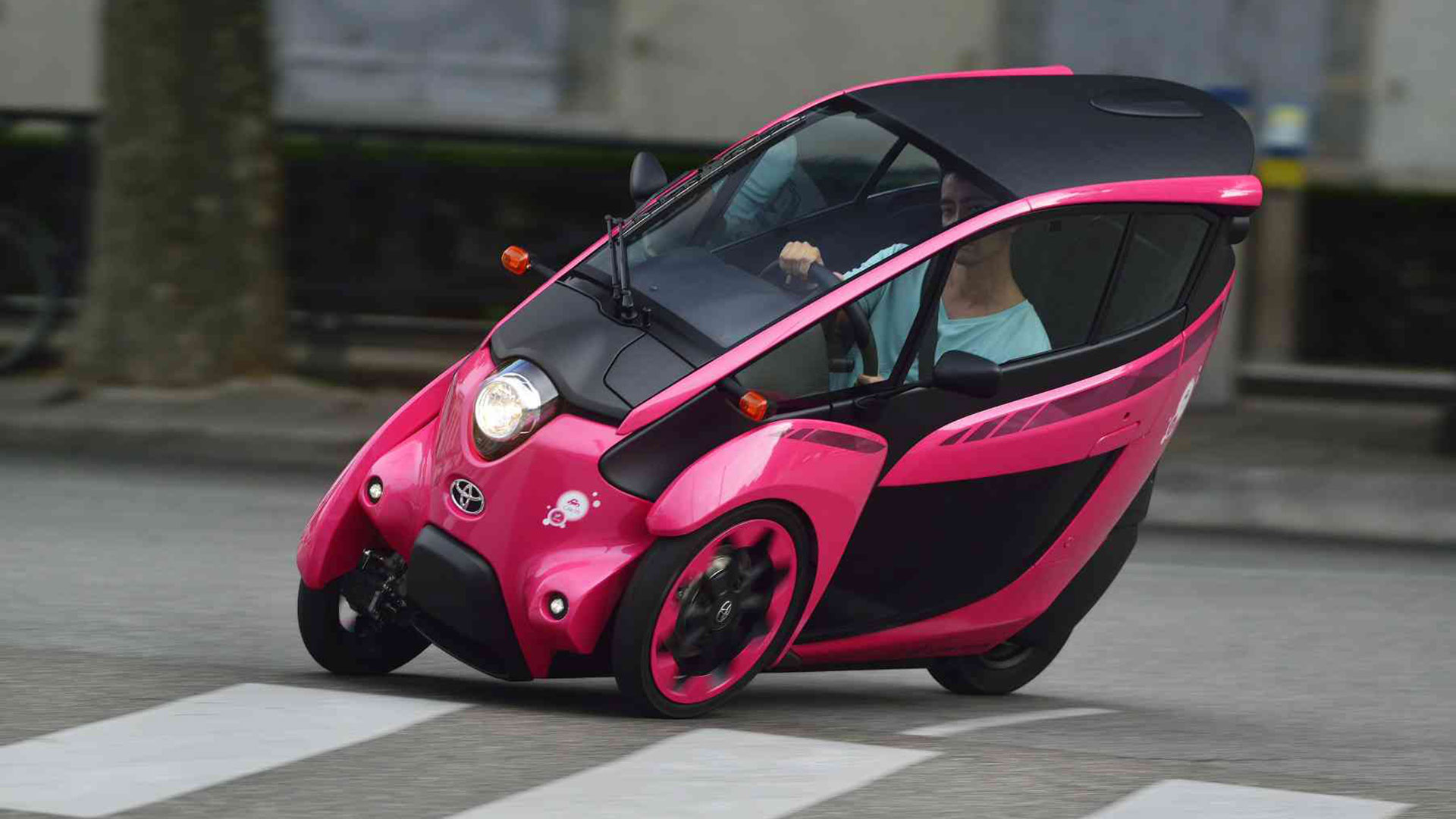Take a Segway, scooter, a Smart Fortwo and maybe a Suzuki motorcycle, mash them into a gyroscopic ball, and you’d have something like the Toyota iRoad.
We put the contraption through its battery-powered paces on an indoor autocross at the Jacob K. Javits Center in Manhattan, but were denied showing off its Tilt-a-Whirl moves on the nearby West Side Highway. This may have been a good thing, considering its wafer-thin, largely plexiglass doors and a 661-lb curb weight that’s less than a Yamaha VMax motorcycle.
The iRoad concept has angled around the world for some time now, including the 2013 Tokyo Motor Show, a TED conference and, of late, consumer clinics in Silicon Valley, Dallas and New York. As with models like BMW’s i3, the endearingly weird Toyota is pitched as a transportation solution for increasingly congested, polluted cities. Think an electric tuk-tuk for two.

For Toyota’s little black-and-white cookie, the calling card is an onboard gyroscope and accelerometer. Jumping into the driver’s seat for an indoor autocross at the Javits, I’m immediately leaning through curves like a sailor in a tiny catamaran as the iRoad’s single rear wheel steers and slaloms through the cones. Tied to driving parameters including speed, throttle position and steering wheel angle, the gyroscope dials in the appropriate lean angle. When I push too hard and begin to slide off course on the slick tile floor, a stability control system dials back throttle and dabs brakes to get back on path, and vibrates the steering wheel to cue me to back off.

Jason Schulz, business development manager for Toyota North America, answers the first question that pops into every driver’s mind.
“We’ve all tried, and no one has tipped it over,” he says.
Schulz bills the two-seater as having “the fun of a motorcycle with the safety and convenience of a car.” That is, if your idea of motorcycling fun is topping out at 35 mph. That’s the iRoad’s conservatively set limit to ensure a 30-mile driving range on a lithium-ion battery that takes three hours to charge on a 110-volt household plug. Two electric motors drive front wheels independently, with Toyota mum on how much power they generate or the battery capacity. If you’re wondering, the three-wheeler is currently classified as a motorcycle for regulatory purposes.

At 92 inches long and less than three feet wide, the iRoad is 14 inches shorter than a Smart Fortwo, currently the dinkiest new car in American showrooms. A tiny rear jump seat lets a rider semi-straddle the front chair. Or you might fill the rear space with groceries or a Pomeranian, but not both. Controls are minimal and lightweight: a single headlamp, fabric door pulls, manual pull-up Plexiglas windows, a parking brake, USB port and pushbuttons for Drive, Neutral and Park.
Toyota says the iRoad could perform urban errands as a hyper-affordable second or third car, or replace golf carts in gated communities or corporate settings.

“There’s more smiles-per-mile than anything we make,” Schulz claims. I am smiling when I emerge from the iRoad, but still, what about a tail-happy Scion FR-S? Schulz considers this for a moment.
“The FR-S doesn’t lean,” he says.
